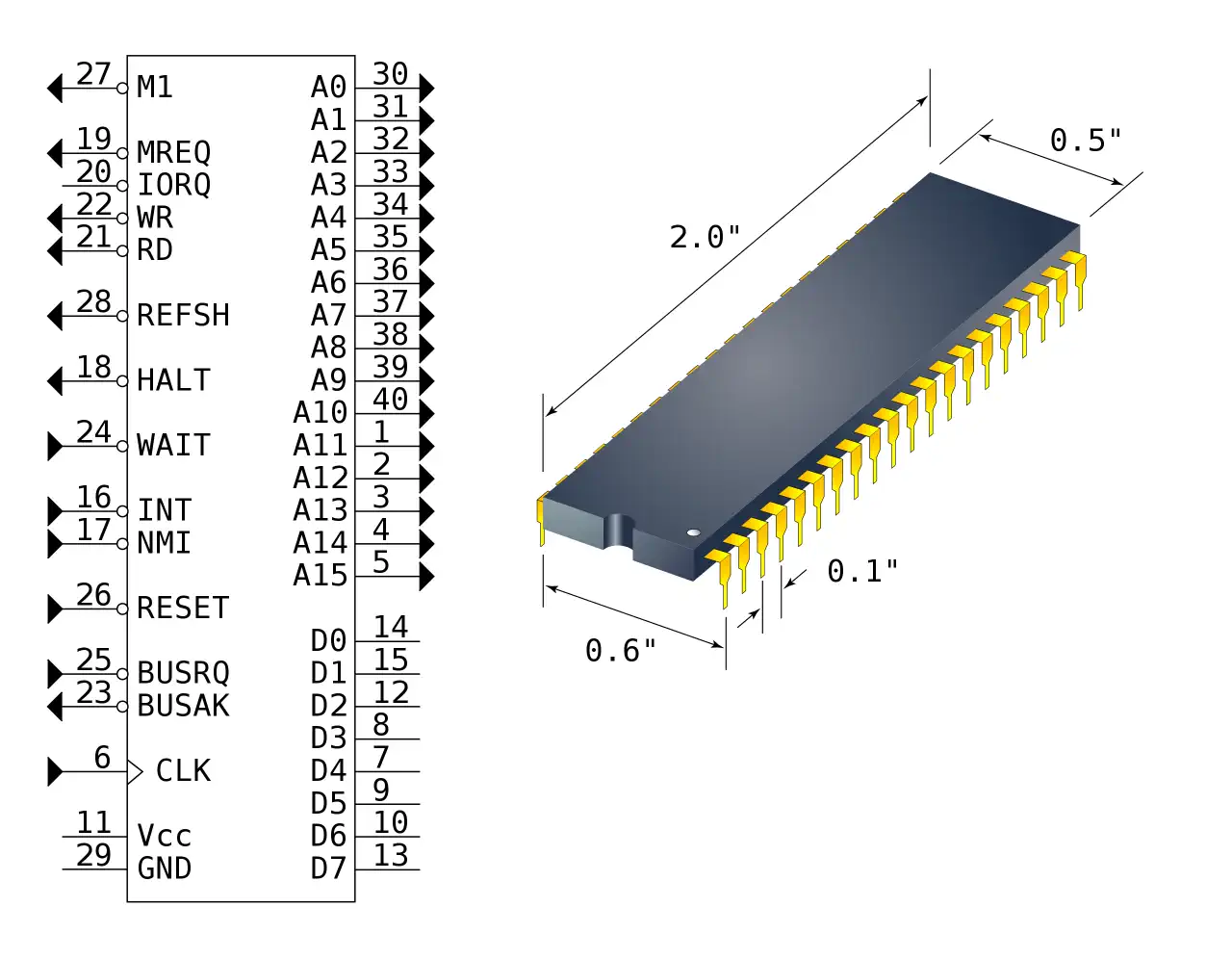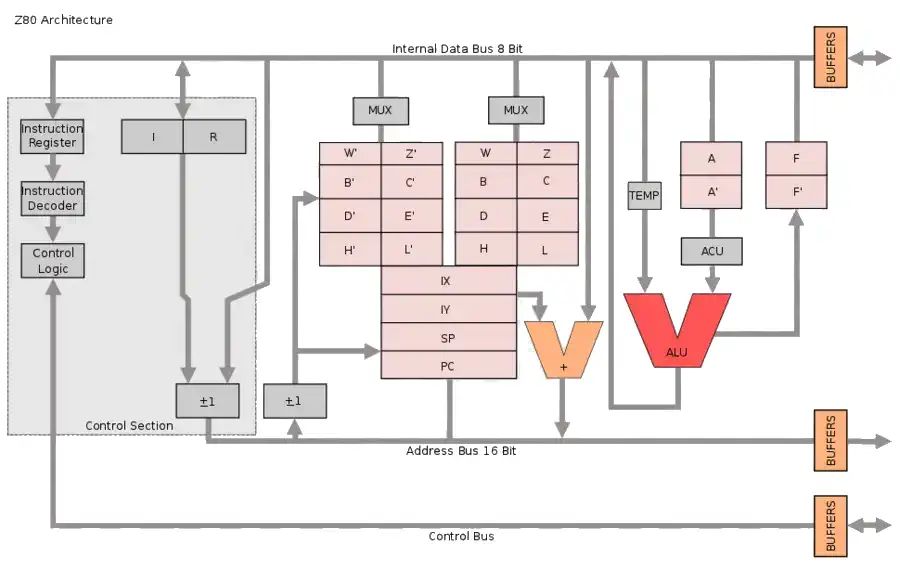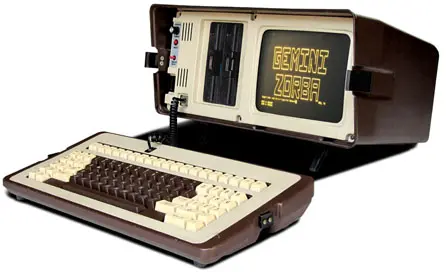The Zorba 9 - An 8-bit CP/M computer
The Zorba 9, also branded the Zorba 2000 was an upgrade of the Zorba 7. The Zorba 9 came with a 9" screen, and had 2 built-in 820KByte floppy disk drives. Optionally the machine could be equipped with a 10MByte hard drive.
Sales of the Zorba's were poor. The market was already saturated with CP/M machines, and the 8-bit architecture was becoming obsolete already. The IBM PC's were starting to take over the business market. All in all, only about 6000 Zorba computers were manufactured and sold.
The Zorba came with several terminal emulators, including Heathkit 19/89, Zenith 19/89 and DEC VT52. This allowed the Zorba's to run virtually all existing CP/M software.
The Zorba's came with 2 serial ports, a parallel printer port and an IEEE-488 port.
Zilog Z80 CPU Family
The Z80 quickly became popular in the personal computer market, with many early personal computers, such as the TRS-80 and Sinclair ZX80, using the Z80 as their central processing unit (CPU). It was also widely used in home computers, such as the MSX range, SORD, and the Amstrad CPC, as well as in many arcade games. Additionally, it was also used in other applications such as industrial control systems, and embedded systems. The Z80 was widely used until the mid-1980s, when it was gradually replaced by newer microprocessors such as the Intel 80286 and the Motorola 68000.
The Z80 microprocessor was developed by Zilog, a company founded by Federico Faggin in 1974. The Z80 was released in July 1976, as a successor to the Intel 8080. It was designed to be fully compatible with the 8080, but also included new features such as an improved instruction set, more powerful interrupts, and a more sophisticated memory management system.
The Z80 quickly became popular in the personal computer market, with many early personal computers, such as the TRS-80 and Sinclair ZX80, using the Z80 as their central processing unit (CPU). It was also widely used in home computers, such as the MSX range, SORD, and the Amstrad CPC, as well as in many arcade games. Additionally, it was also used in other applications such as industrial control systems, and embedded systems. The Z80 was widely used until the mid-1980s, when it was gradually replaced by newer microprocessors such as the Intel 80286 and the Motorola 68000. The design was licensed to Synertek and Mostek as well as the European SGS.
The Z80s instruction set is binary compatible with the Intel 8080, so that 8080 code such as the CP/M Operating System and Intel's PL/M compiler for the 8080 can run unmodified on the Z80. The Z80 had many enhancements over the 8080 such as 16-bit data movement instructions, block copy and block I/O instructions, single bit addressing of all registers, IX/IY offset registers, better interrupt system and a complete duplicate register file for context switching during an interrupt.
Source: WikiPedia


